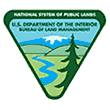|
Chuckwalla National Monument California |
 |
 BLM photo | |
The Chuckwalla National Monument will protect and preserve more than 624,000 acres of lands in southern California that hold extraordinarily diverse ecological, cultural, and historical value. By designating this new national monument, President Biden is enhancing outdoor access for nearby communities, preserving critical habitat for imperiled and rare species, and ensuring the ancestral homelands and sacred cultural legacies of the region’s Tribal Nations endure for generations to come – all while demonstrating that clean energy and conservation can go hand in hand. The monument will be managed by the Department of the Interior’s Bureau of Land Management.
The new monument will protect the ancestral homelands and cultural landscapes of the Cahuilla, Chemehuevi, Mojave, Quechan, and Serrano Nations, and other Indigenous peoples. The monument boundary includes five distinct areas that together encompass sacred sites, ancient trails, historic properties, cultural areas, religious sites, petroglyphs, geoglyphs, and pictographs, honoring and safeguarding the cultural and spiritual value inherent with these lands. Tribal Nations and Indigenous peoples in the region lived, used, and traveled through the areas protected by the monument, including the southern edge of a travel route that stretched north and east through what are now the Avi Kwa Ame and Baaj Nwaavjo I’tah Kukveni – Ancestral Footprints of the Grand Canyon National Monuments.
Located just south of Joshua Tree National Park, the Chuckwalla National Monument will be at the confluence of the Mojave and Colorado Deserts, showcasing an awe-inspiring landscape of mountain ranges, meandering canyons and washes, dramatic rock formations, palm oases, and desert-wash woodlands. Its natural wonders include the Painted Canyon of Mecca Hills, where visitors can wind through towering rock walls and marvel at the landscape’s dramatic geologic history, and Alligator Rock, a ridge that has served as a milestone for travelers for millennia. The region is also home to more than 50 rare species of plants and animals, including the desert bighorn sheep, Agassiz’s desert tortoise, and the iconic Chuckwalla lizard, from which the monument gets its name. The new monument will enhance the connectivity of wildlife habitat and safeguard clean water for more than 40 million people by protecting the Colorado River region, while providing exceptional outdoor recreation opportunities for historically underserved communities in the Coachella Valley.
Source: The White House Fact Sheet (January 2025)
|
Establishment Chuckwalla National Monument — January 14, 2025 |
For More Information Please Visit The  OFFICIAL BLM WEBSITE |
Documents
Camp Coxcomb (Protect Chuckwalla National Monument, 2024)
Chuckwalla National Monument Establishment and Joshua Tree National Park Expansion Act of 2023 (H.R. 5560, 118th Congress 1st Session, September 21, 2023)
Climatological Values Survey: Chuckwalla National Monument (Protect Chuckwalla National Monument, 2024)
Ecological Values Survey: Chuckwalla National Monument (Protect Chuckwalla National Monument, 2024)
Landscape Evolution in Eastern Chuckwalla Valley, Riverside County, California U.S. Geological Survey Scientific Investigations Report 2021-5017 (Amy E. East, Harrison J. Gray, Margaret Hiza Redsteer and Matthew Ballmer, 2021)
Map: Chuckwalla National Monument (January 2025)
Maps and Interpretation of Geochemical Anomalies, Chuckwalla Mountains Wilderness Study Area, Riverside County, California U.S. Geological Survey Miscellaneous Field Studies Map 1795 (Kenneth C. Watts, Jr., 1986)
Overview: Chuckwalla National Monument (Protect Chuckwalla National Monument, 2024)
Proclamation 10881—Establishment of the Chuckwalla National Monument (Joseph R. Biden, Jr., January 14, 2025)
Proposed Chuckwalla National Monument and Joshua Tree National Park Expansion (April 12, 2024)
Sensitive Flora of Chuckwalla National Monument (Protect Chuckwalla National Monument, 2024)
Water Features — Proposed Chuckwalla National Monument (Roux Associates, Inc., May 16, 2023)
chuckwalla/index.htm
Last Updated: 07-Jan-2025